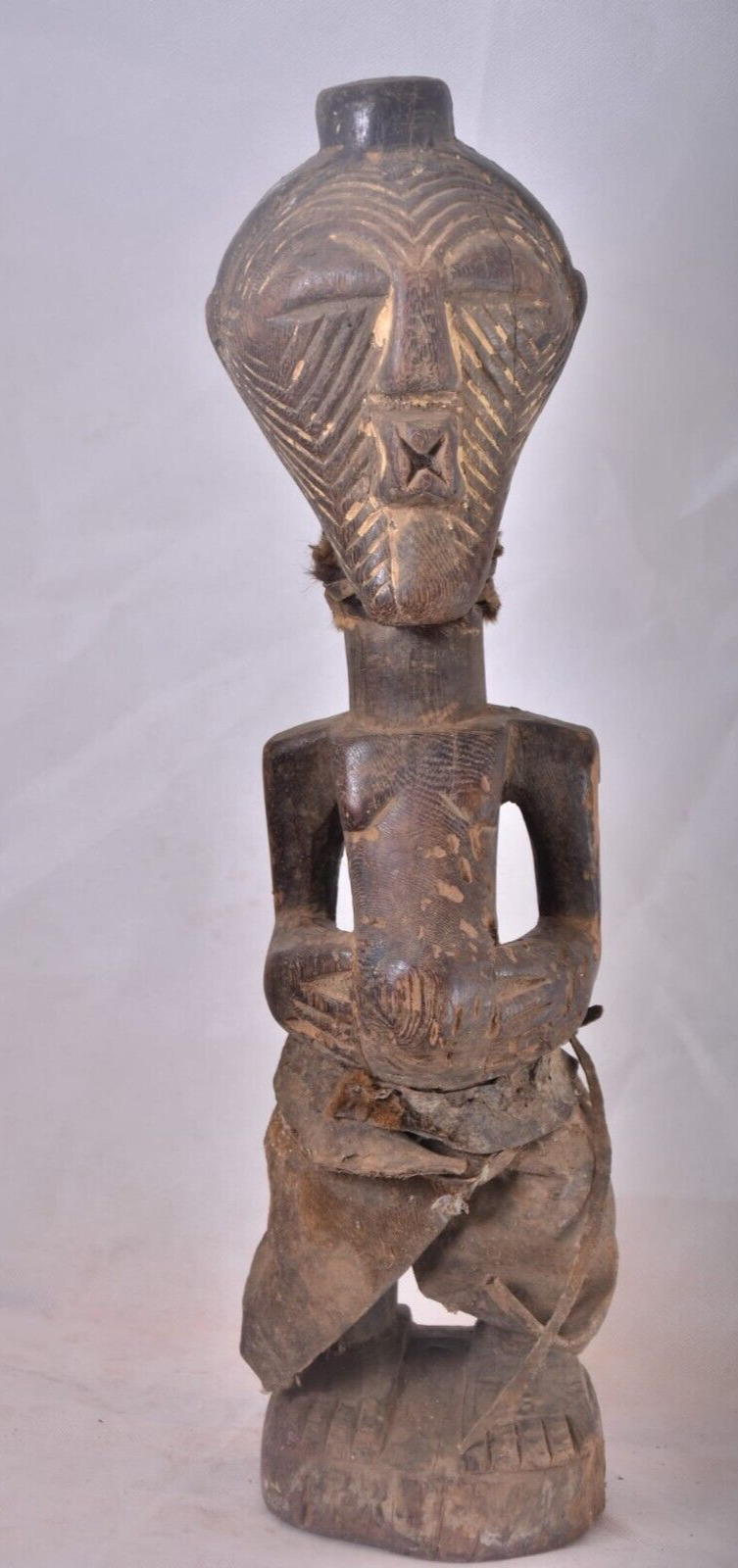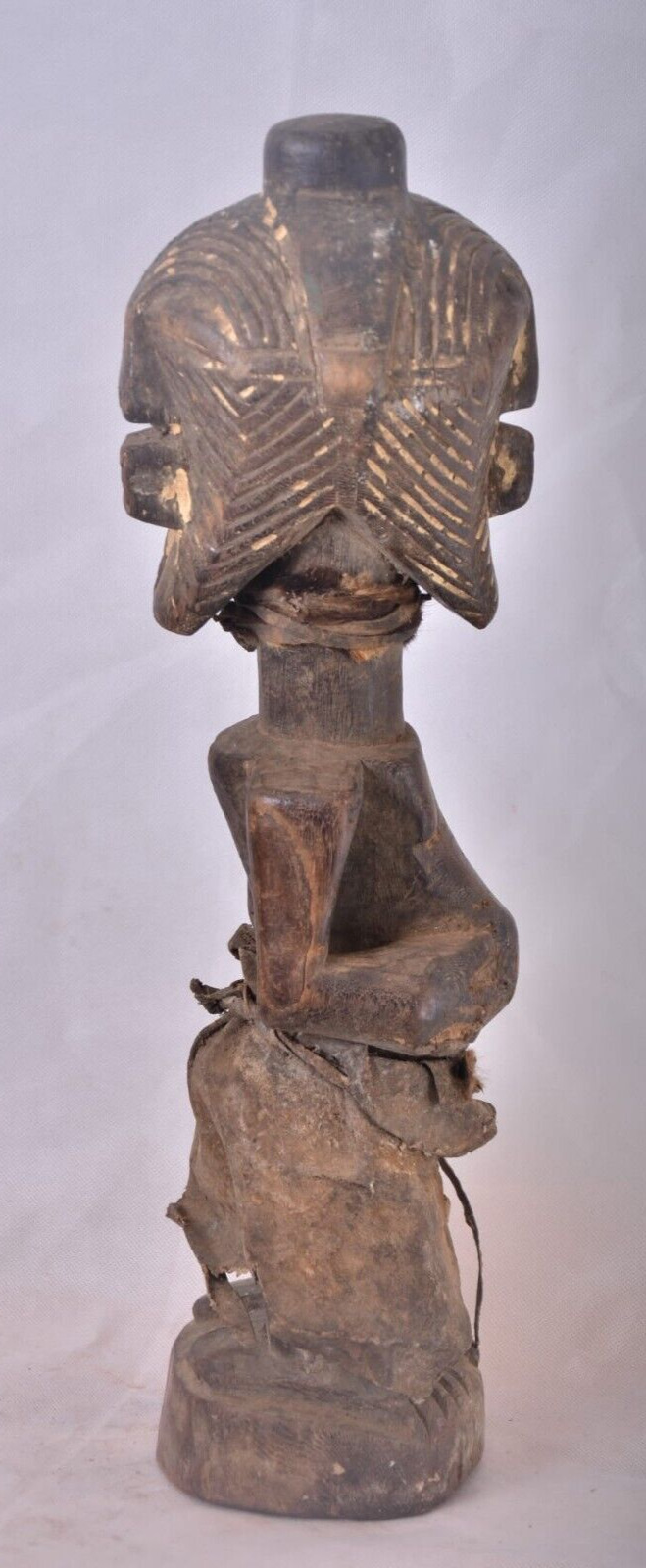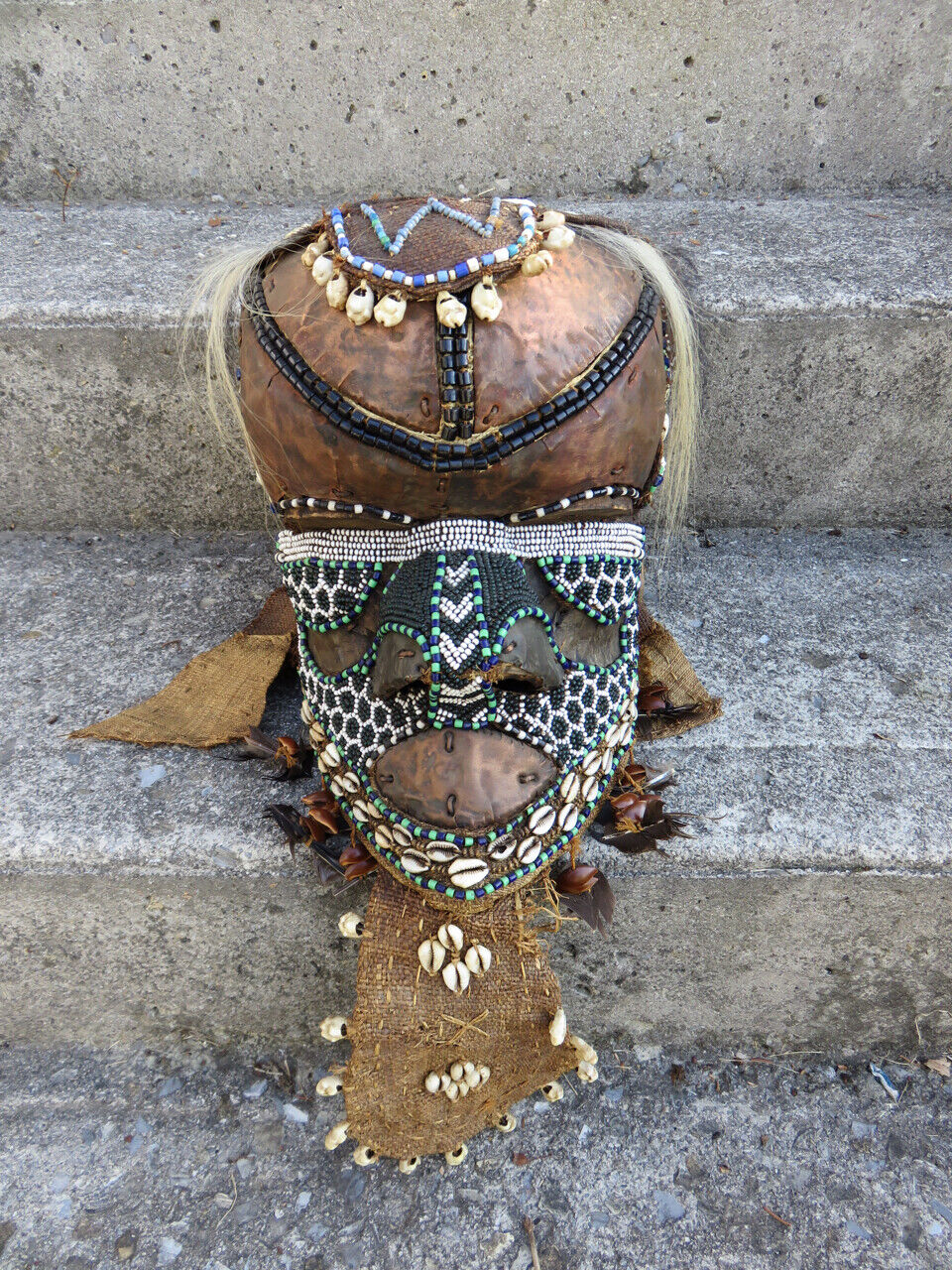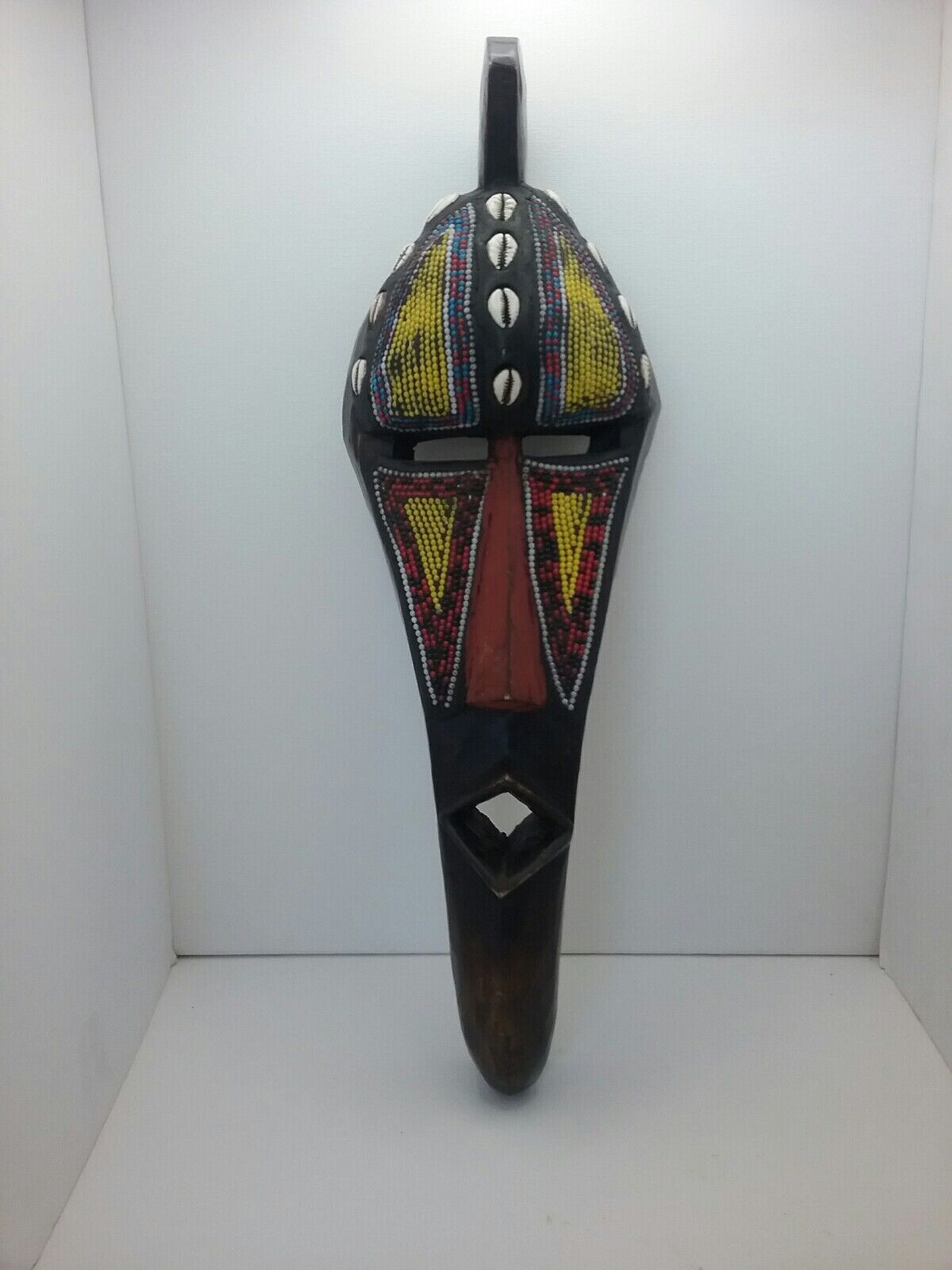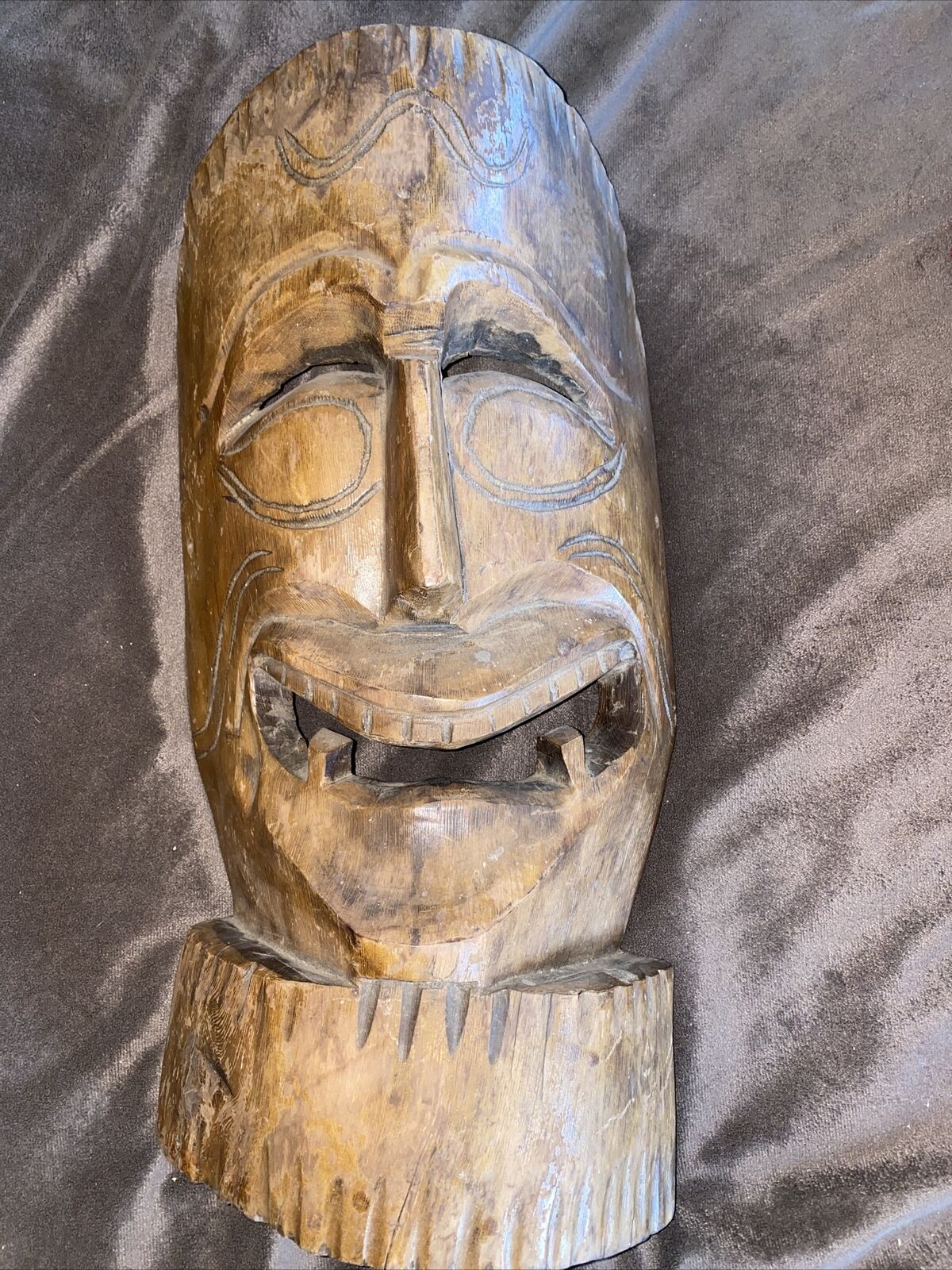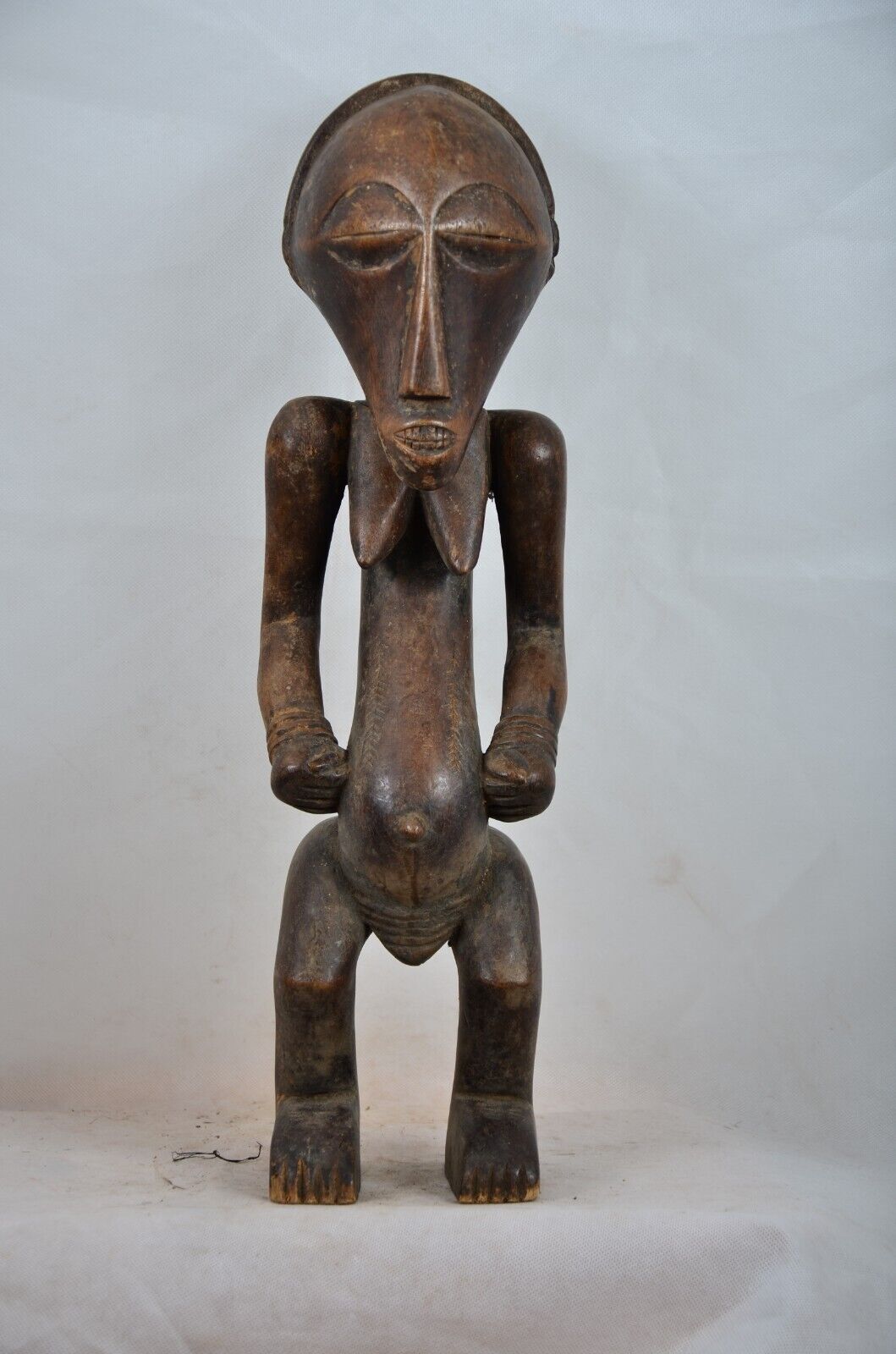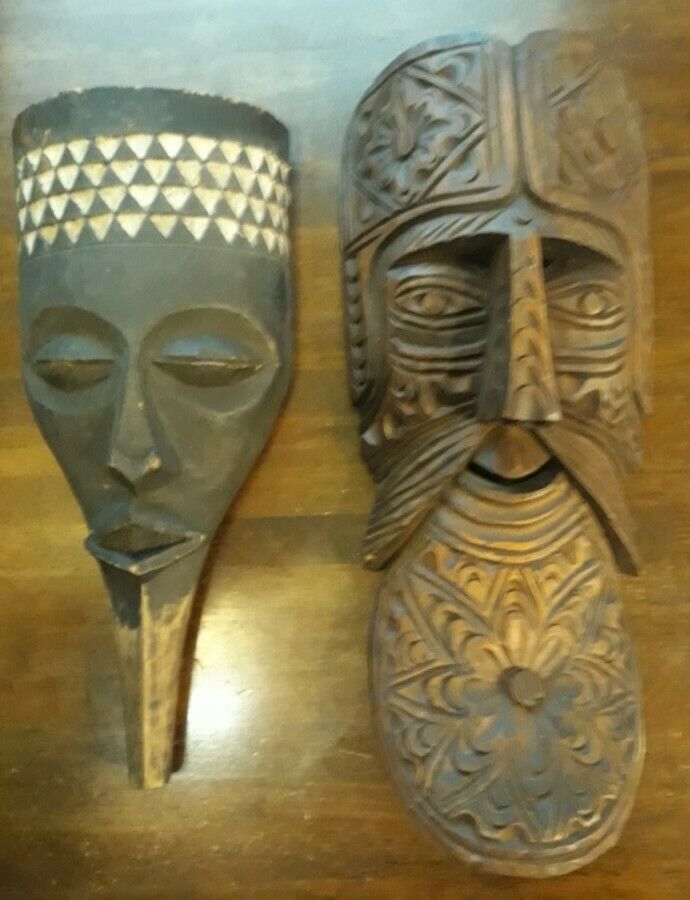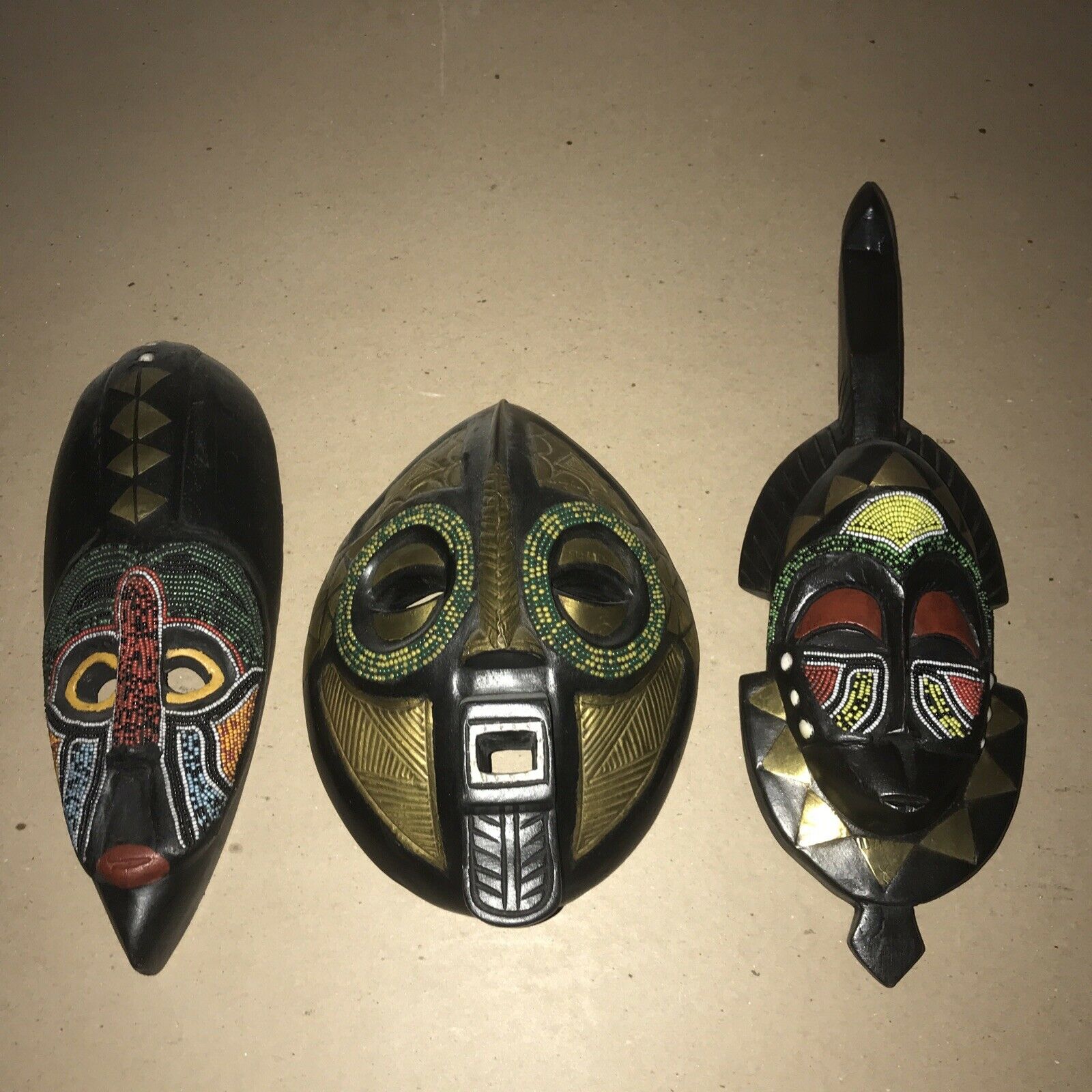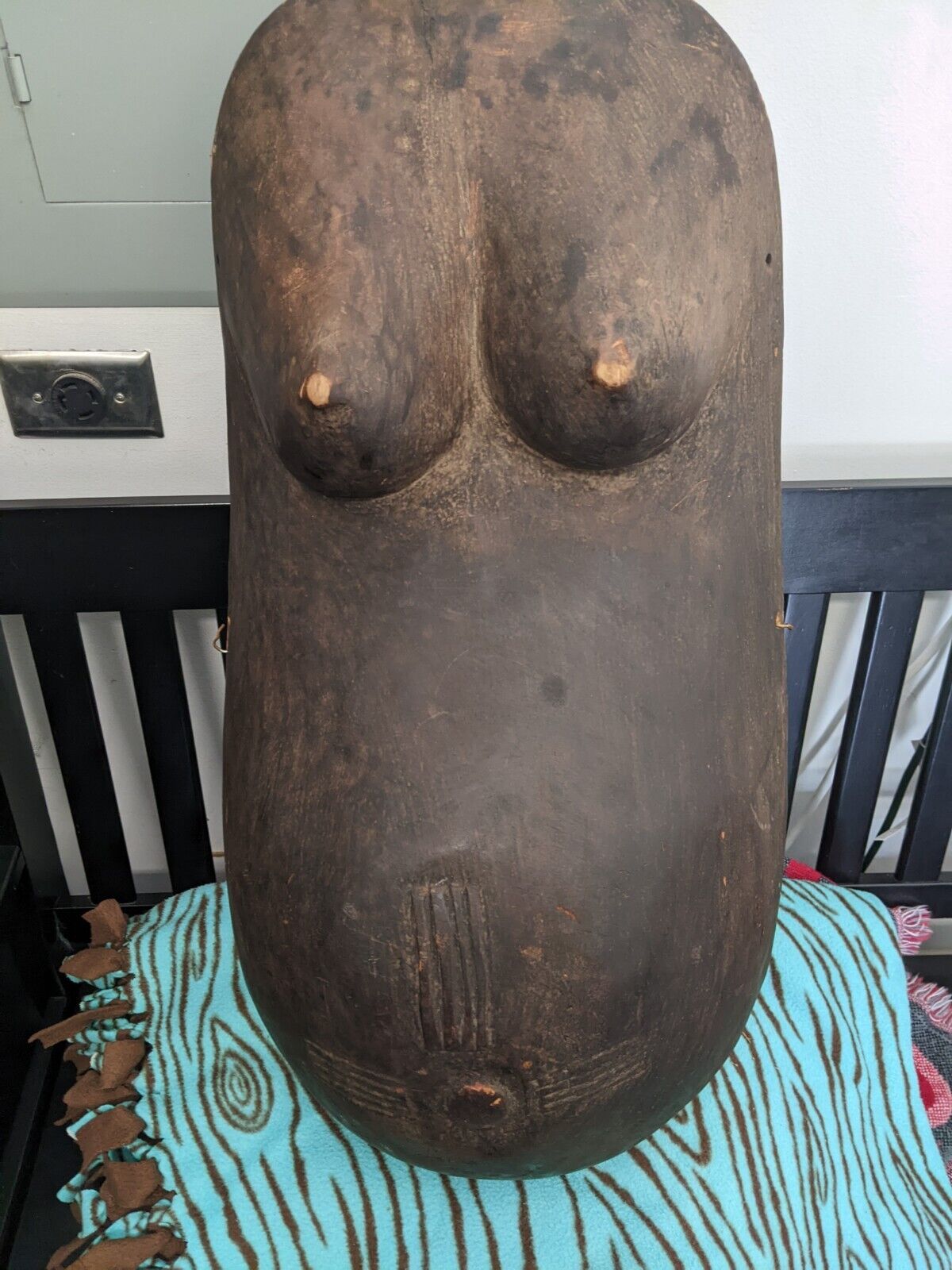-40%
Africa Tribal Art DOUBLE headed songye fetish statue from Congo DRC
$ 179.52
- Description
- Size Guide
Description
TitleAfrican art tribal, Songye statue from -DRC
Types of object
Statue
County of origin
Democratic Republic of congo
People
Songye
Materials
Wood
Approximate size
54 cm-21 inches high
TRIBAL AFRICAN ART
SONGYE (BASONGE, BASONGYE, BASSONGO, BAYEMBE, SONGE, SONGHAY, WASONGA)
Democratic Republic of the Congo
During the 16th century, the Songye migrated from the Shaba area, which is now the southern part of the Democratic Republic of the Congo. Their history is closely linked to the Luba's, to whom the Songye are related through common ancestors. Having waged war against one another for a long time, the Songye and Luba later formed an alliance to fight the Arabs. They settled on the left bank of the Lualaba River, on a savanna and forest-covered plateau. Divided into many subgroups, the 150,000 Songye people are governed by a central chief assisted by innumerable secret societies.
The Songye traditionally relied mostly on farming and hunting for subsistence. Because the rivers were associated with the spirits of deceased chiefs who were often buried in them, fishing was not practiced except in times of great need. The artistic wares of the Songye, including pottery made by women and weaving and metalworking done by men, were traded extensively with their neighbors.
The Songye created a sculptural style of intense dynamism and vitality. The works of Songye craftsmen are often used within the secret societies during various ceremonies. They produced a large number of figures belonging to the fetishist, who manipulates them during the rituals of the full moon. Songye fetish figures vary in size from 4” to 60”. They are usually male and stand on a circular base. Strips of metal, nails or other paraphernalia are sometimes applied over the face, which counteract evil spirits and aggressors and channel lightings against them. The top of the head and the abdomen are usually hollowed to allow insertion of fetish material, called
boanga
. These figures adopt a hieratic posture, the hands placed on a pointed abdomen; on top of the head they have a horn or feathers reinforcing a disquieting appearance. The fetishist would make the
boanga
with magic ingredients, which he crumbled and mixed, thus obtaining a paste that was kept in an antelope horn hung from the roof of the house. The magic ingredients consist of a wide variety of animal, vegetal, mineral and human substances that activate and bring into play benevolent ancestral spirits. The face is often covered with nails, a reminder of smallpox. The style of Songye fetishes, carved from wood or horn and decorated with shells, is not as realistic as the classic Luba style, and their integration of non-naturalistic, more geometric forms is impressive. The figures are used to ensure their success, fertility, and wealth and to protect people against hostile forces as lightning, as well as against diseases such as smallpox, very common in that region. While smaller figures of this type were kept and consulted by individuals, larger ones were responsible for ensuring the welfare of an entire community.
